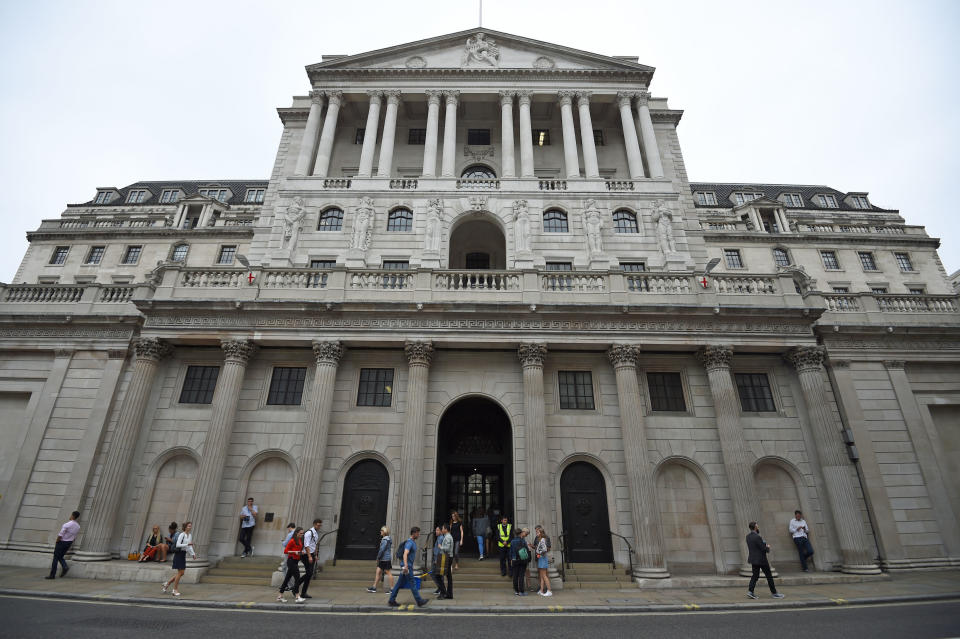Why the Bank of England's work culture is a 'glimpse into the past'

When the Bank of England (BoE) first opened its doors in 1694, the then-private bank was holed up in temporary accommodation with just 17 clerks and two gatekeepers.
More than three centuries later, the bank faces growing questions over its vast property empire, costly spending habits from the public purse and “outdated” working practices among its 4,000 staff.
The internal workings of the venerable institution are being exposed to public scrutiny perhaps like never before. Britain’s influential public accounts committee, a cross-party group of MPs, is investigating for the very first time how the bank manages its own affairs, rather than how it handles its main goal of ensuring financial stability.
The committee says its time looking into the bank has been in some ways “a glimpse into the past,” in an extraordinary report published today that will make uncomfortable reading for many of its staff.
READ MORE: Glassdoor survey shows the Bank of England is one of the best places to work
The report suggests some parts of the bank’s work culture are “years out of date,” and urges its senior officials to modernise their working practices or risk the very credibility of the institution.
The BoE said to MPs it was “not defensible” for a public body to have its own sports ground and centre, not least when only 13% of staff were signed up members. But the bank argued it was no drain on the public purse, making a profit from tennis facilities sold on a 125-year lease.
MPs take the bank to task over its offices at Threadneedle Street in London, claiming it has “not thought hard enough” about sub-letting parts of its headquarters or establishing a more prominent regional office.
The committee says it was “concerned” to find 800 desks unoccupied at Threadneedle Street, and that 250 more desks had been bought in 2017-18. It says hot-desking has not yet taken off at the world’s second oldest central bank.
The bank’s reasons for not sub-letting more of its vast, listed office building were that it also housed £140bn worth of gold, and did not have enough bathrooms for more people.

The report also questions the bank’s own spending, saying its technology and HR costs were “expensive” compared to the public sector – with the institution paying a striking 33.6% more for its IT than the central government benchmark.
MPs say they asked the bank if they really needed their own printing facility in Debden. Officials said completely outsourcing banknote production had not been ruled out.
As for staffing, the report claims more than 700 job titles create “complexity and inefficiency, as well as increased potential for staff to ‘play’ the system.” It even orders bank chiefs to simplify its staffing structure and ensure pay and promotions reflect the BoE’s needs, “not the skill levels and ambitions of staff currently in post.”
The bank said it had invested heavily in diversity programmes, but the report demands more action to achieve its goals of a 50:50 gender split and 20% black, Asian and minority ethnic (BAME) workforce by 2020.
READ MORE: Bank of England policymaker predicts ‘conceivable’ Brexit outcomes
The number of female employees has hovered at 44-45% since 2015. BAME staff form 18% of the workforce, and MPs were concerned they made up 23% of those leaving the institution.
Other intriguing revelations include the fact its 4,000 staff spend a combined 8,000 hours a day commuting to work, largely from the southeast of England.
“The leadership of the Bank in the past has not modernised the Bank in line with the rest of the public and private sector in the UK,” it concludes.
But some of the bank’s “outdated” ways and the commute do not appear to be putting off staff. An analysis by the jobs site Glassdoor last year suggested it was one of the most highly rated organisations in Britain by employees for its work-life balance.
Some officials who gave feedback praised its flexible working arrangements, while others said they enjoyed significant freedom in their work and could see how it made a difference.
A spokesman for the Bank said: “We have received the report and will study it and respond in due course.”

 Yahoo Finance
Yahoo Finance 